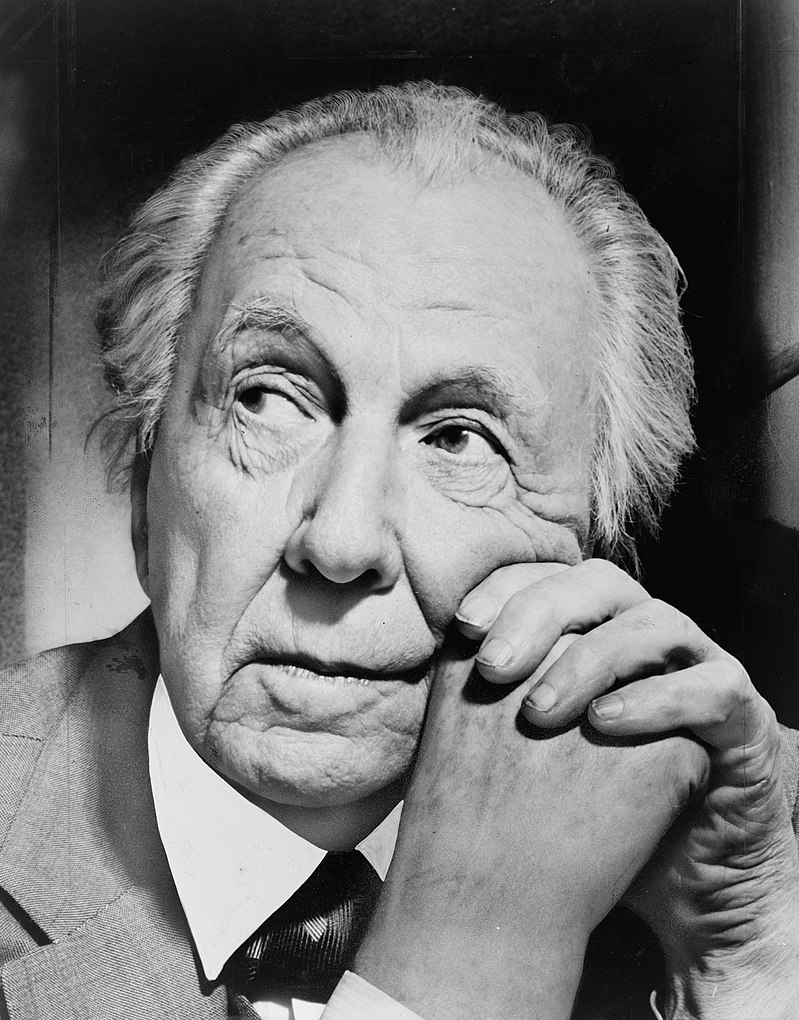Biography
Frank Lloyd Wright (1867–1959)
American architect, born in Wisconsin. He studied civil engineering for a year at the University of Wisconsin, was influenced by the writings of Viollet-le-Duc, then worked in Chicago (1889–93) in the office of Louis Sullivan. Between 1900 and 1910 he designed 50 houses in the ‘Prairie style’, emphasising low, horizontal proportions: the prototype of the openplanned house.
The Robie house in Chicago (1909) is a famous example. His highly original style integrated engineering techniques into architectural expression, by use of appropriate materials and stressing the importance of a harmonious relationship between building and landscape. Wright had a turbulent and well-publicised domestic life. He built a famous house and work centre, Taliesin, at Spring Green, Wisconsin in 1911. (In August 1914 his mistress, two of her children and four others were murdered there by a deranged servant and part of the house was burnt down.) He built another home and school, Taliesin West, at Scottsdale, Arizona. His Imperial Hotel, Tokyo (1916–22), one of the few major buildings to survive the 1923 earthquake, was demolished in 1968.
By 1930 his work, using natural materials and related to landscape, appeared to be eclipsed by the mechanistic ‘International style’ of Le Corbusier, Gropius and Mies van der Rohe, which he detested. He concentrated on teaching, then produced his greatest works. Among his masterpieces were the ‘Fallingwater’ house, near Pittsburgh (1936–37), the Johnson Wax Building, Racine, Wisconsin (1936–39) and the Guggenheim Museum, New York (1956– 59).
He designed about 800 buildings of which 484 were constructed and 433 survive. Wright was also a furniture and window designer and a prolific writer, particularly influential in Europe. He wrote a revealing (but wildly inaccurate) Autobiography (1932). His hero was *Wagner and his life had operatic overtones.






